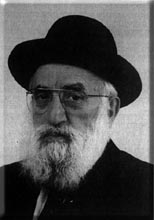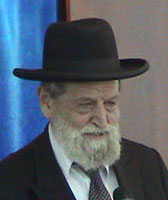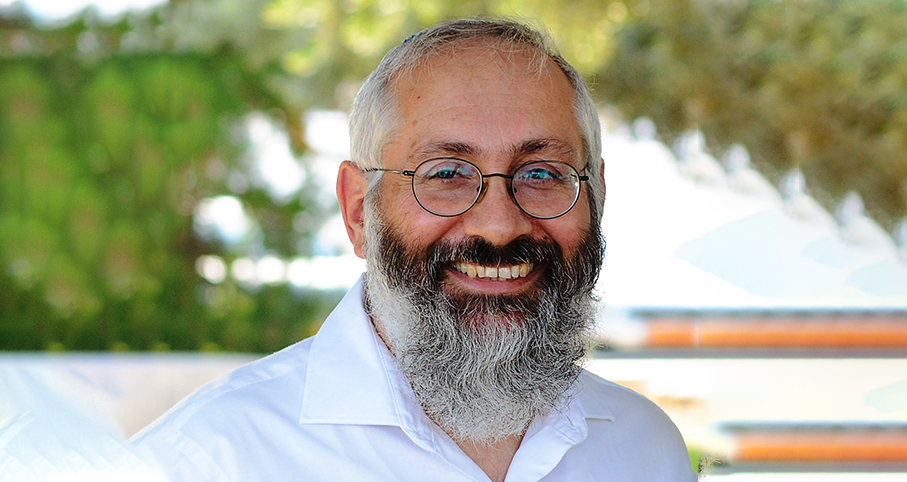Beit Midrash
- Sections
- Chemdat Yamim
- Bemare Habazak - Rabbis Questions
- Shabbat and Holidays
- Passover - Pesach
- Erev Pesach
Answer: Acharonim raise several peculiarities of this fast, some of which may be related to the various opinions as to why the firstborns are supposed to fast

Bemare Habazak - Rabbis Questions (627)
Rabbi Daniel Mann
347 - Temporary Markings in a Sefer Torah
348 - The Logic Behind the Unusual Fast of the Firstborn
349 - The Way to Make Charoset
Load More
The Tur is among sources that indicate that it is a commemoration of the miracle of the saving of the firstborn from makat bechorot. This is the explicit rationale behind two mitzvot – redeeming human firstborns and sacrificing animal firstborns (Shemot 13:15). But questions are raised on this approach. We usually celebrate positive miracles; we do not fast over them! The miracle impacted the descendants of the firstborns in Egypt, not contemporary firstborns! Isn’t Seder night the right time to commemorate the miracle (that’s when it occurred)? The Birkei Yosef (470:7) says that it should have been that night but was moved up because we cannot fast on Yom Tov.
Others (see Mikraei Kodesh (Frank) Pesach II:22) say that we are reliving a fast that occurred in Egypt on the 14th. When the Jews realized that all firstborns were in danger, firstborns fasted lest they be killed along with the Egyptian firstborn. Although the decree was for the death of Egyptians, not Jews, they did not rule out the possibility that sins would connect with the danger and some Jews might die. Reliving this act of protection would also explain the minhag of some that parents fast for their firstborn who are too young to do so (see Shulchan Aruch and Rama, Orach Chayim 470:1-2), as parents are concerned for their children. Otherwise it is difficult, as if one’s child is too young to do a mitzva, where do we find that a parent does it in his place? In this way, it is also parallel to Ta’anit Esther, which commemorates Esther’s fast (see Rambam, Ta’anit 5:5).
There is a third approach, which is found, with variations, which we will inexactly combine (Halichot Shlomo, Pesach 8:(1) in the name of Rav Auerbach; Mo’adim U’zmanim VII:169). The firstborn were elevated to a special level when being saved in Egypt, and this should have enabled them to lead the service in the Mikdash for all generations. However, Bnei Yisrael’s sin of the Golden Calf, excluding the Tribe of Levi, caused the distinction to be taken away from them. On Erev Pesach, which is a prominent type of Mikdash service, the firstborn take note of their descent into a lower level, and seek atonement by means of fasting.
Some minhagim and varied opinions work out differently according to the different explanations; we will only hint at some directions, without much detail. There is some question as to which Egyptian firstborns died, and thus which Jews were saved. This question can impact on the minhagim of whether firstborn girls fast or not (see Shulchan Aruch and Rama, OC 470:1). Firstborn girls were not slated for service in the Mikdash.
The Aruch Hashulchan (OC 470:5) explains the acceptability of using seudot mitzva such as a siyum to get out of the fast as follows. The fast is not a very strong minhag, and since it is hard for people to finish Pesach preparations and go into the Seder fasting, it is fine to be lenient and find a legitimate way out. The author of the footnotes to Mikraei Kodesh (ibid.) suggests that if the main thing is to commemorate what happened, unlike regular fasts, participation in a siyum, which people know is needed to justify firstborns not fasting, is itself a commemoration of what happened. The unusual nature of the fast also can explain why the eating at a seudat mitzva justifies continuing to eat throughout the rest of the day (see discussion in Minchat Yitzchak VIII:45).

Ask the Rabbi: Drawer with Aluminum Foil Roll
Rabbi Daniel Mann | Cheshvan 5786

Ask the Rabbi: Kohen Who Has Trouble Standing
Rabbi Daniel Mann | Cheshvan 5786

Ask the Rabbi: Having a Non-Jew Build a Sukka and Assemble Arba’a Minim
Rabbi Daniel Mann | Tishrei 5786

Ask the Rabbi: Beracha when Lighting for a Neighbor
Rabbi Daniel Mann | Kislev 5786

Rabbi Daniel Mann

Davening Early on Shavuot
Iyar 26 5777

Reciting Borei Nefashot on Food When One Will Still Drink
Sivan 3 5780

Bikur Cholim by Electronic Means
Shvat 1 5782
























